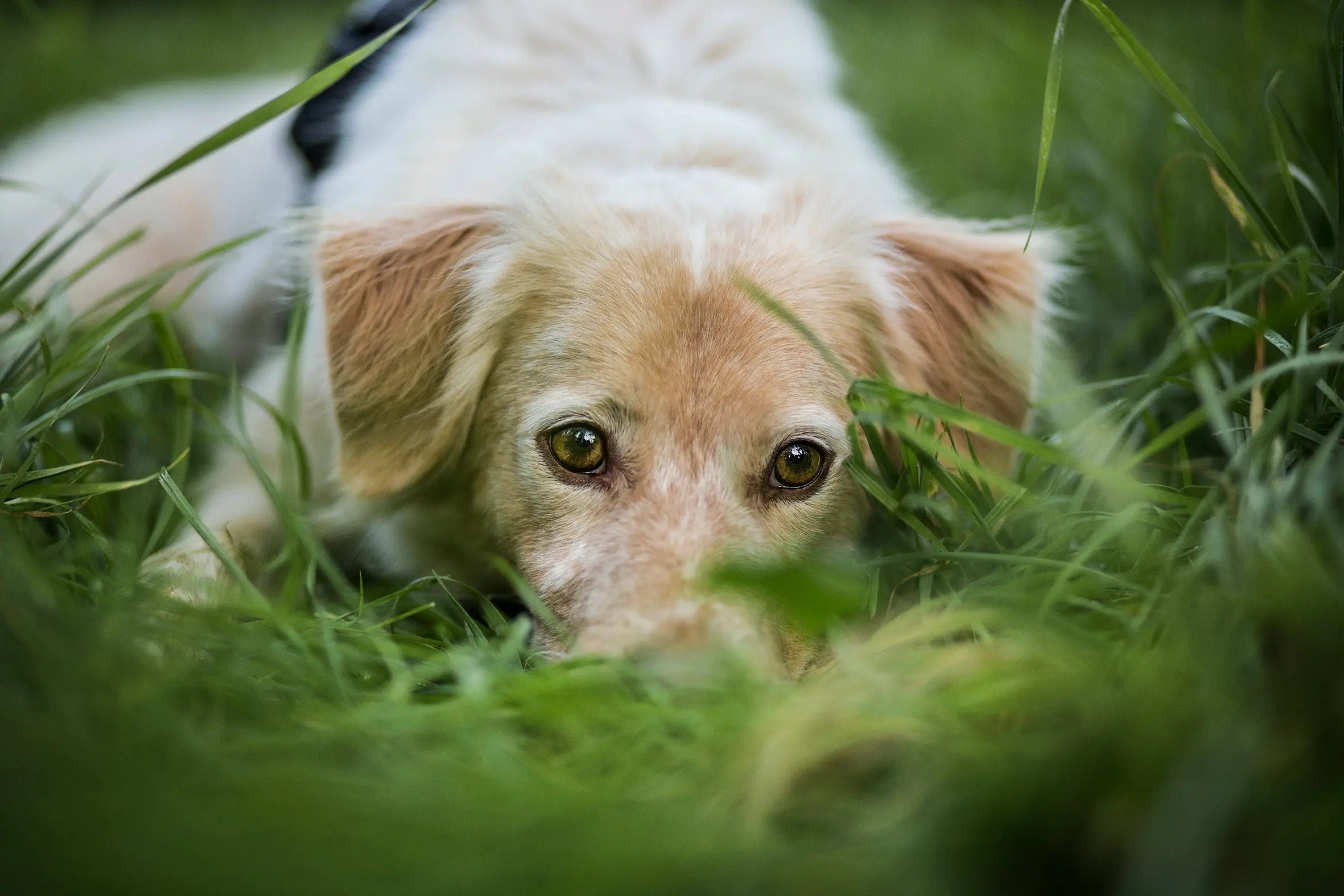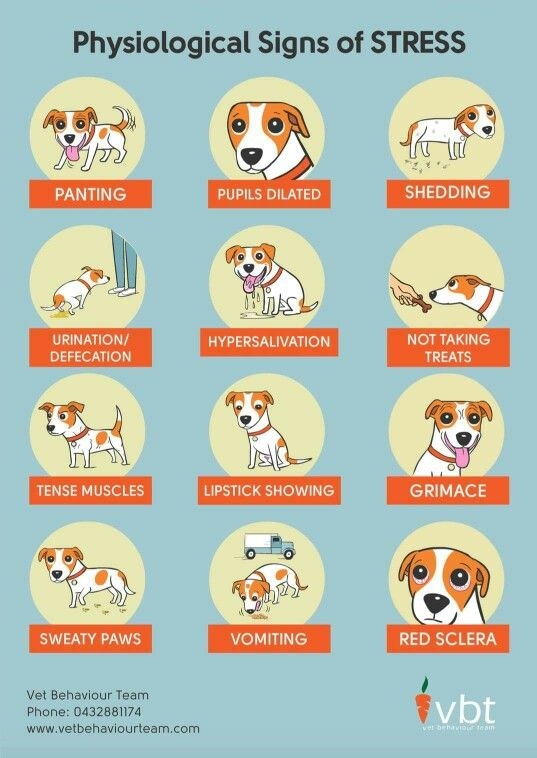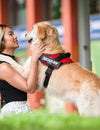
It’s always worrying when your dog acts out of character. Maybe they become more vocal, maybe they hide, maybe they whimper, maybe they become aggressive.
There can be many reasons why your dog starts acting strangely but often we can pinpoint the cause. However, if your dog is stressed it can be a lot harder to find the exact reason or it may be difficult to even figure out if they are anxious or stressed in the first place.
Below we outline the common signs of dog stress, how to spot the symptoms, and how to relieve their anxieties.
Common Signs of Stress
It’s important to keep in mind some of these symptoms might just be habits. You know your dog better than anyone and will sense when something is ‘off’ about your furry friend’s behavior.
Constant whining or barking
One of the most common signs of stress is uncontrollable whining and whimpering. This normally happens in environments they are unfamiliar with or have had a previously bad experience in – like the vets. They may also bark continuously if stressed, which is them telling you they are not happy in a situation.
Extensive sideways head movement
If you notice that your dog is continuously moving their head side to side for no understandable reason, then this could mean they are feeling stressed.
Urinating in the house and other toilet habits
Dogs mark territory to let other dogs know that a space is theirs or to communicate their status. But if your pet starts to do this anew then they may be doing this to once again feel safe. This can be a sign of stress as your dog no longer feels secure in a place they consider theirs. Stomach upsets like diarrhea and constipation can also be a sign of stress.
Crouched with tail between legs
When your dog has their tail between their legs, is crouched down awkwardly, and has lowered ears then most owners know this is a sign of fear. But if your dog is acting fearful in a location familiar to them, or in a situation where they are normally okay with, then it could mean your dog is feeling so anxious that they are on the edge of fear.
Growling
This is of course a sign that your dog is uncomfortable and is often not meant to be aggressive but is instead a warning to be left alone and to back away. However, if you find your dog growling a lot more often, at people they are normally comfortable around, or in out of character situation, then this is another sign of an anxious or stressed dog.
Pacing
Just as you might walk back and forth, dogs also pace when they are unable to settle. This is a common sight when they are waiting for food, getting ready for a walk, or excited in a game of fetch, but if you find them doing frequently with no obvious stimulate and unable to relax then this could be a sign of stress.
Other signs
The Vet Behaviour Team based in Sydney, Australia outline some other physiological signs you may see in your dog if they are stressed in this handy chart:

Treating Stress in Your Dog
It should go without saying that if your dog becomes stressed in easily avoidable situations then you should avoid those situations. For instance, some dogs love swimming while others do not. If your dog shows signs of being stressed around the water then they simply might not be cut out for a life in the seas. But of course some stressful situations are unavoidable like long car journeys of vet appointments.
Below we have outlined some helpful tips and tricks you can try to help your dog overcome anxious behavior.
A regular routine
Prevention is simpler than a quick fix cure for your dog’s stress. A regular routine of daily walks and playing helps your dog focus their energy into exercise. Even a small disruption to a dog’s everyday routine can cause stress, so try and minimize this disruption where ever possible and give them the attention they are accustomed to. For example, if you are unable to take them for their regular morning walk, try and make up for it with an extra long walk in the evening.
Distraction with playing and treats
Playing works as an excellent distraction for dogs in many situations and this includes stress. Using tugs and fetch balls or their favorite toy gives your dog something else to focus on instead of the stressful situation and can calm their nerves.
If you are using treats to ease their worries, then you should do this as part of your general reward system – a treat for sitting or heeling for instance. This will also help ground your dog with an everyday routine.
Safe spaces
One of the most useful things to do is simply remove your dog from the situation and get them to a place they feel comfortable. Their safe space might be where their bed is, a room they go to when they want some peace, or even just by your side. Calling your dog over to you can work wonders if you are out in an unfamiliar location and they are feeling anxious.
Sometimes your dog will be so stressed in situations you might need to entice them away with treats. You should use the treat to lead them away from the problem and then reward them with it once at a safe distance.
Relaxing music
Back in 2015, Scottish SPCA found that playing classical music to dogs in their rehoming centres had calming effects which significantly reduced their stress levels. Reggae and soft rock are also shown to be beneficial.
YouTube channel Relax My Dog has loads of music specially chosen to calm anxious dogs and many videos offering advice on handling an anxious pet.
Calm yourself down
Dogs have a fantastic sense for people’s emotions, especially their owners, and so your dog maybe anxious because you are. It’s easier said than done to calm yourself down while going through a stressful situation, but you should remind yourself that your dog maybe simply mimicking your emotions and is stressed because their favorite person in the world is.





